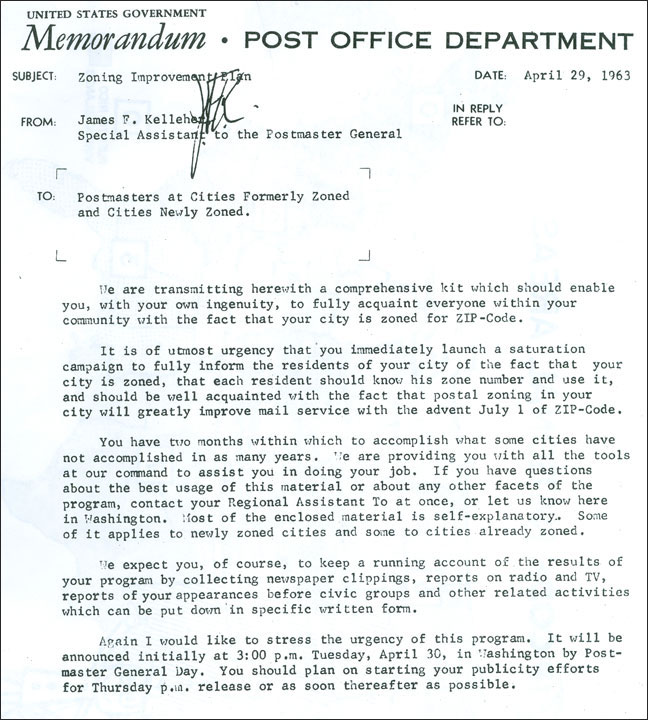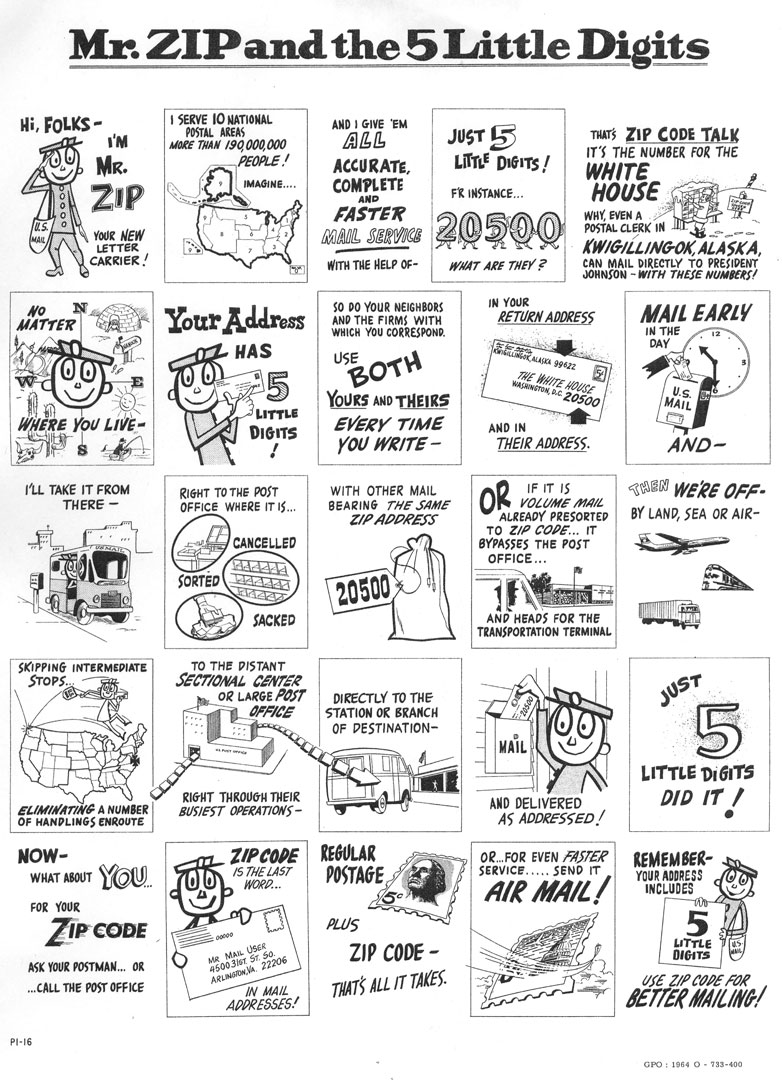
Immediately following the implementation of the ZIP Code system, Mr. Zip began appearing in various forms around big cities and small towns. His likeness was soon displayed everywhere, from local post offices to the sides of mail delivery vehicles. It was these images of Mr. Zip around town that first made him into a household name and called early attention to the ZIP Code system.
It has been noted that the actions of local post offices across the country to promote ZIP Code were indispensible to the success of the promotional campaign and to the eventual widespread use of ZIP Codes.(1) As evidenced by the instructions to local postal employees published in the Postal Bulletin,the Post Office Department recognized the importance of using post offices early on, and it sent memos to local postmasters stressing the urgency of promoting ZIP Code in towns and cities, large and small, across the country.(2) The Department sent packets of information, which contained things such as sample press releases, to local post offices for use in ZIP Code promotions within their communities. One press packet contained a news feature that postmasters could choose to run in a local paper. The feature states, “[Mr. Zip] won’t be seen on the comic pages. In fact, Postmaster [fill in name of local postmaster] says, he [Mr. Zip] is expected to perform a much more vital role in both the business and social life of the community.”(3) This indicates that the POD wanted communities to integrate Mr. Zip into local social events and the very fabric of town life. The information packets sent to local post offices were extremely important, as they provided them with the tools they needed to get the “Mr. Zip” message out to their communities.
This memo was sent from the Post Office Department to local postmasters in April, 1963. It explains the urgency of ZIP Code promotion and urges local post offices to utilize kits provided by the Post Office Department, as well as their own ingenuity to make local citizens aware of ZIP Code (courtesy, George Kroloff, Post Office Department).
In addition to providing information packets, the Post Office Department encouraged local post office employees to wear Mr. Zip buttons and letter carriers to display Mr. Zip decals on their letter satchels. Over the course of the ZIP Code promotional campaign, Mr. Zip appeared on buttons worn by 50,000 post office window clerks and on the uniforms of 125,000 letter carriers.(4) His presence also graced the lobbies of post offices across the country. Cutout Mr. Zip figures, also produced by the Department for use in local post offices, were used to remind mailers to use ZIP Codes on their letters. The letter in Mr. Zip’s hand would also often offer a friendly reminder of the town or city’s ZIP Code, and some of the Mr. Zip cutouts even included recorded explanations emphasizing the importance of using ZIP Code that would play at the push of a button. In addition to appearing in post office lobbies and on the uniforms of post office clerks and letter carriers, Mr. Zip also caught public attention from his spot on the side of mail delivery vehicles. These vehicles were one of the most visible parts of the Department, as they were seen driving up and downs streets across the country on a daily basis. Placing the Mr. Zip image on the sides of mail vehicles was a guaranteed way to raise local awareness of ZIP Codes. The Postal Bulletin from July 25, 1963 states that ZIP Code posters were to be displayed on delivery vehicles, and were to remain permanent when no other poster display was specified.(5)












